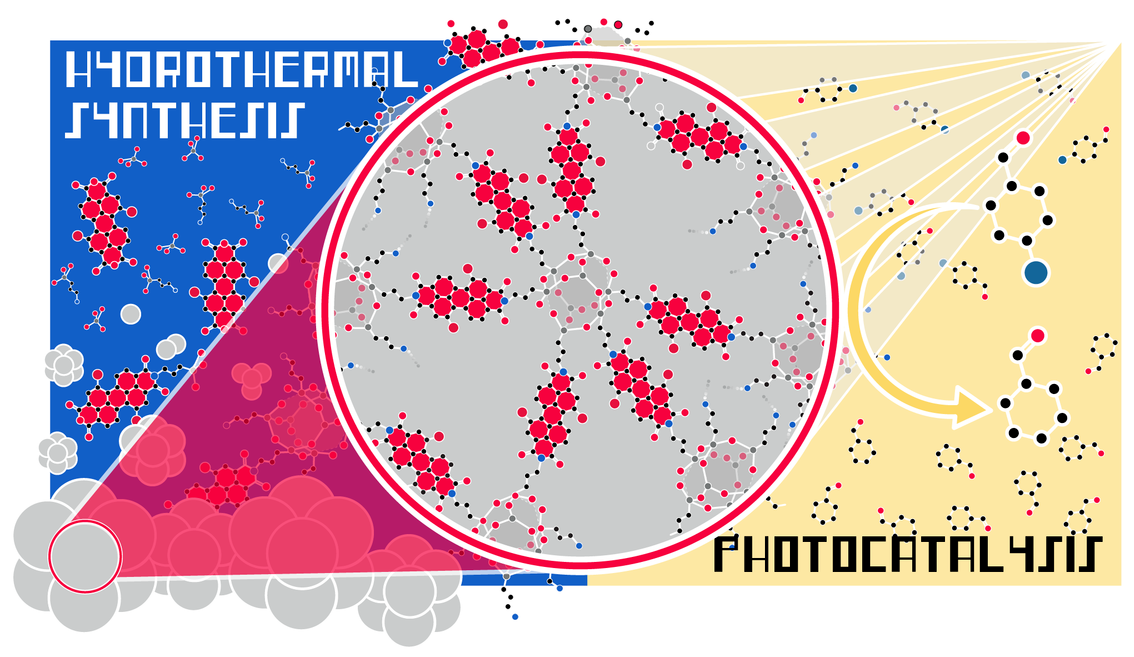Under the guidance of chemist Miriam Unterlass, a research team was successful in generating organic and inorganic substances in a single process with the help of an eco-friendly method.

Image Credit: D. Alonso Cerrón-Infantes.
The production of chemical substances usually necessitates the use of hazardous solvents. After producing organic substances without hazardous substances for the first time by heating them in hot water, the research team of Miriam Unterlass, professor of solid state chemistry at the University of Konstanz, can now claim another victory.
By adopting the method of hydrothermal synthesis, the researchers were successful in collaboratively developing and integrating organic and inorganic substances in the same reaction vessel. Particularly: an inorganic solid that encircles organic dye molecules.
Upon being subjected to light, which is so far considered to be the most environmentally friendly energy resource, the hybrid material functions similar to a catalyst, that is, a photocatalyst. As the photocatalyst is solid, multiple usages are possible.
The study was recently reported online in the Journal of Materials Chemistry A and has been featured on the cover page.
Hydrothermal synthesis, that is, the production of materials under pressure present in hot water, is copied from nature. For instance, in underground hot water reservoirs, rock crystals develop as the atoms that have been dissolved in the hot water react with each other, initially developing molecules and further crystals.
Similarly, it is possible to produce inorganic molecules in synthetic chemistry — and as explained in a study on the eco-friendly process in the synthesis of organic substances obtained from 2021 by Miriam Unterlass — and also organic molecules without harmful solvents.
Environmentally Friendly Synergy of Both Processes
An eco-friendly synergy of both techniques emerges from the present outcomes, in which first author Dr. Hipassia Moura, a postdoctoral researcher in Miriam Unterlass’ team, plays a crucial role.
In our work we show that it is possible to form inorganic and organic substances at the same time in ‘hot water’, and that something useful comes out of it.
Miriam Unterlass, Professor, Solid State Chemistry, University of Konstanz
The fact that it is possible for the hybrid material to be produced entirely in the absence of harmful solvents is all the more exceptional since the research team works with dye molecules that generally need highly poisonous chemicals for their synthesis.
The core of the new substance made in hot water has been developed with the help of dye molecules that are present as a solution, while the material encircling them possesses the properties of a solid. The outcome is a solid that acts like a solution with optical properties.
Reusable Catalyst
Dyes as solutions possess highly specific properties. The dye molecules utilized by the research team of Miriam Unterlass have been able to absorb light and hence catalyze reactions. This process is quite similar to photosynthesis in plants, where pigments that absorb the light are required for photosynthesis.
Unlike a solution that has to be disposed of after use, the hybrid material also has the added benefit that it is able to be utilized again and again as a catalyst as it is like a solid on the outside.
The research team's specific target for application are small organic molecules that could play a crucial role in pharmaceuticals. But in principle, the technique is relevant for several chemical reactions and hence the production of innumerable synthetic products. Also, while water still has to be heated for the synthesis of the hybrid material, only light energy is needed for the catalytic effect.
Light is the best resource we have. Light cannot be used up.
Miriam Unterlass, Professor, Solid State Chemistry, University of Konstanz
Journal Reference:
Moura, H. M., et al. (2022) Green hydrothermal synthesis yields perylenebisimide–SiO2 hybrid materials with solution-like fluorescence and photoredox activity. Journal of Materials Chemistry A. doi.org/10.1039/D1TA03214C.